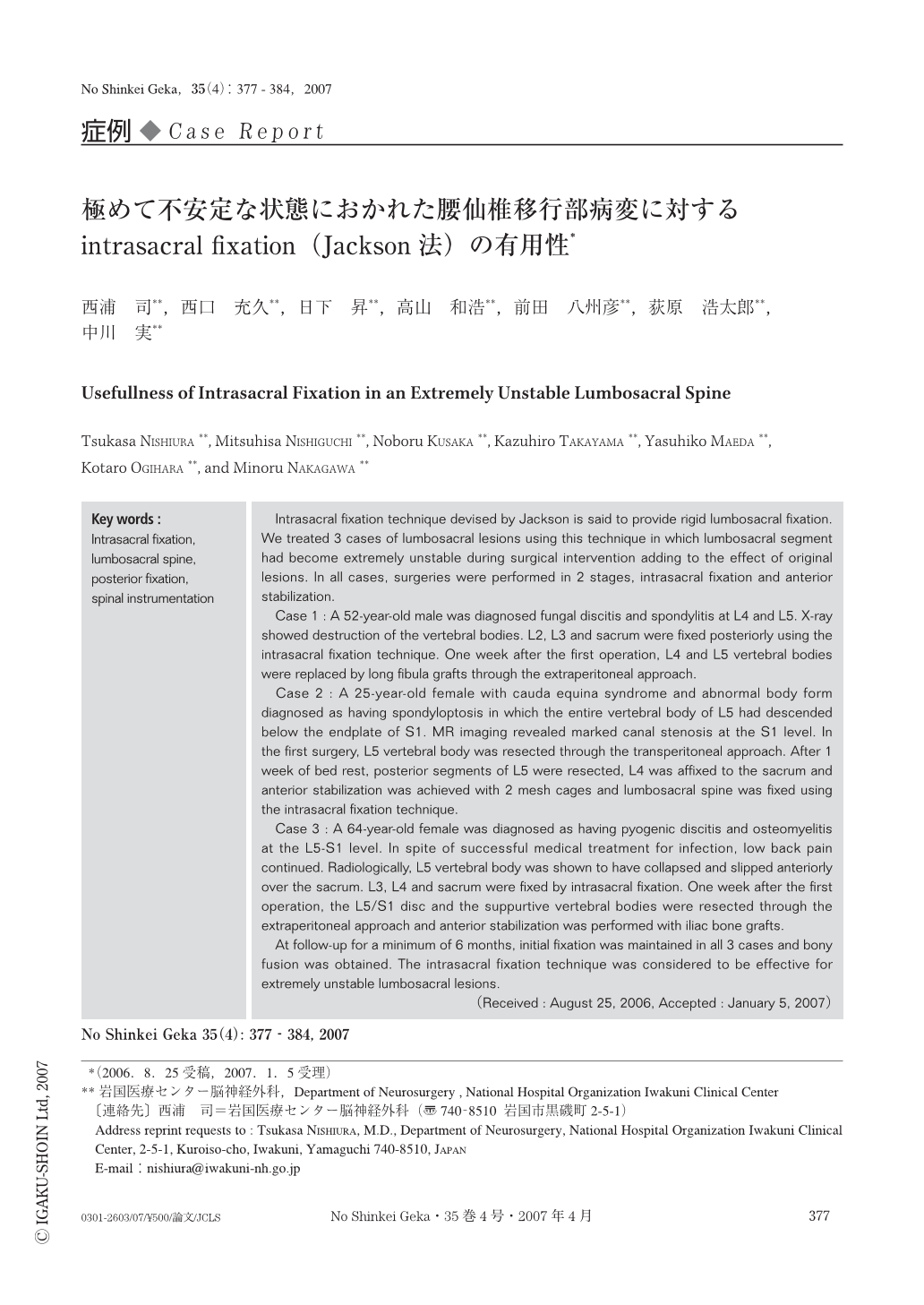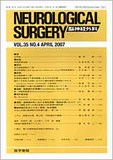Japanese
English
- 有料閲覧
- Abstract 文献概要
- 1ページ目 Look Inside
- 参考文献 Reference
Ⅰ.はじめに
腰仙椎間は,仙骨頭側面が腹側に傾斜し重力線に対して大きな剪断力が作用するため固定しがたく,また骨癒合率も他の高位に比べて低いとされる11,14,15).この不安定要因に拮抗すべくこれまでにも種々の固定法が開発されてきた.Jacksonによるintrasacral fixation8)(Fig. 1)では,岬角を抜くように刺入した仙骨スクリューと仙骨スクリュー頭部より仙骨外側部に刺入したロッドが仙骨を強力に保持し,ロッド先端部が仙腸関節部で押さえられる,いわゆるiliac buttress効果9)により,腰仙部での屈曲負荷に対する固定性を維持できるとされる.われわれは腰仙椎が極めて不安定な状態を強いられた3症例に対して本法を応用し,その有用性を認めたので報告する.
Intrasacral fixation technique devised by Jackson is said to provide rigid lumbosacral fixation. We treated 3 cases of lumbosacral lesions using this technique in which lumbosacral segment had become extremely unstable during surgical intervention adding to the effect of original lesions. In all cases, surgeries were performed in 2 stages, intrasacral fixation and anterior stabilization.
Case 1 : A 52-year-old male was diagnosed fungal discitis and spondylitis at L4 and L5. X-ray showed destruction of the vertebral bodies. L2, L3 and sacrum were fixed posteriorly using the intrasacral fixation technique. One week after the first operation, L4 and L5 vertebral bodies were replaced by long fibula grafts through the extraperitoneal approach.
Case 2 : A 25-year-old female with cauda equina syndrome and abnormal body form diagnosed as having spondyloptosis in which the entire vertebral body of L5 had descended below the endplate of S1. MR imaging revealed marked canal stenosis at the S1 level. In the first surgery, L5 vertebral body was resected through the transperitoneal approach. After 1 week of bed rest, posterior segments of L5 were resected, L4 was affixed to the sacrum and anterior stabilization was achieved with 2 mesh cages and lumbosacral spine was fixed using the intrasacral fixation technique.
Case 3 : A 64-year-old female was diagnosed as having pyogenic discitis and osteomyelitis at the L5-S1 level. In spite of successful medical treatment for infection, low back pain continued. Radiologically, L5 vertebral body was shown to have collapsed and slipped anteriorly over the sacrum. L3, L4 and sacrum were fixed by intrasacral fixation. One week after the first operation, the L5/S1 disc and the suppurtive vertebral bodies were resected through the extraperitoneal approach and anterior stabilization was performed with iliac bone grafts.
At follow-up for a minimum of 6 months, initial fixation was maintained in all 3 cases and bony fusion was obtained. The intrasacral fixation technique was considered to be effective for extremely unstable lumbosacral lesions.

Copyright © 2007, Igaku-Shoin Ltd. All rights reserved.


